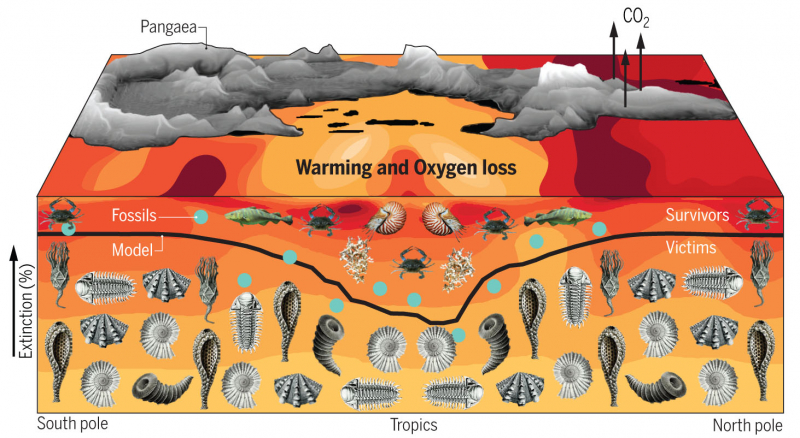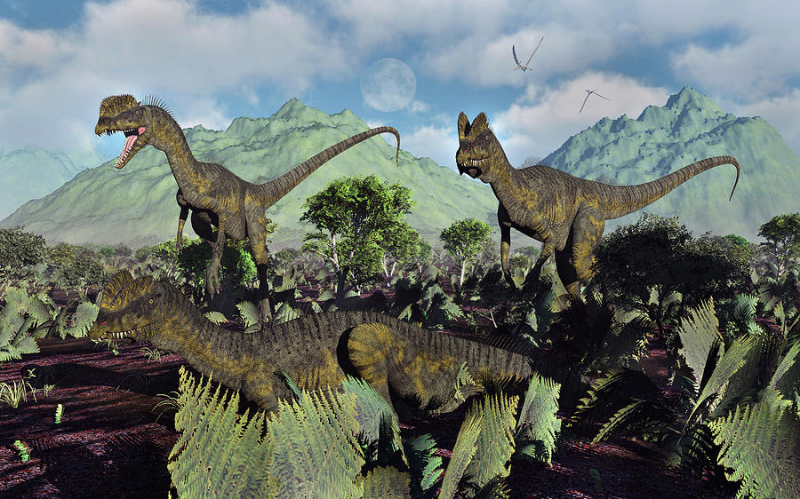Late Triassic extinctions

The Late Triassic extinctions, which occurred mostly between the Norian and Rhaetian stages (approximately 208 million years ago), resulted in the extinction of many amphibian and reptile species on land and many invertebrate, fish, and reptile species in the oceans. These extinctions, along with the environmental shifts that preceded them, paved the ground for dinosaurs to take over terrestrial domination. The biodiversity losses were not caused by a single event, but rather occurred gradually as a result of a worldwide perturbation in the carbon cycle. This anomaly was most likely caused by significant greenhouse gas emissions from large-scale volcanic activity, which might have led to a spike in global temperature that many species couldn't withstand.
The changes in ecosystems in this section of the UK and central European water basins have long been used as a predictor of what transpired, with a dramatic decline in organic carbon-13 regarded to be an early marker of the atmospheric changes that led to this catastrophe. The biological make-up of the ocean entered a transitional period as a result of these changes, but the researchers show that the extinction catastrophe began in earnest tens of thousands of years later, during the late Rhaetian.







